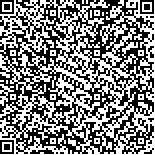| 摘要: |
| [摘要] 目的 应用活体共聚焦显微镜(IVCM)观察干燥综合征(SS)患者角膜神经纤维改变情况和炎性浸润程度,并探讨其与干眼症状之间的相关性。方法 选择2017年1月至2019年10月该院眼科收治的SS患者22例(观察组),另选择同期健康志愿者22名(对照组),均应用IVCM对其角膜中央区域的神经纤维形态、朗格汉斯细胞密度进行观察。检测和记录研究对象的泪膜破裂时间(BUT)、泪液分泌试验(ST)、泪河高度(TMH)结果,并分析其与眼表疾病指数(OSDI)评分的相关性。结果 观察组BUT、ST、TMH指标检测结果显著低于对照组(P<0.05),OSDI评分显著高于对照组(P<0.05)。观察组角膜中央区上皮下神经纤维变细,串珠数量增多,朗格汉斯细胞密度增大,与对照组比较差异有统计学意义(P<0.05)。Pearson相关分析结果显示,观察组OSDI评分与BUT、ST和神经纤维直径呈显著负相关(P<0.05),与朗格汉斯细胞密度呈显著正相关(P<0.05),但其与TMH和神经纤维串珠数无显著相关性(P>0.05)。结论 应用IVCM可以观察角膜上皮下神经纤维形态和朗格汉斯细胞浸润程度。SS患者角膜上皮下神经纤维直径变细,串珠数目增多,朗格汉斯细胞密度增大,其改变与干眼症状具有关联性。 |
| 关键词: 活体共聚焦显微镜 干燥综合征 角膜 |
| DOI:10.3969/j.issn.1674-3806.2022.02.12 |
| 分类号: |
| 基金项目:广西自然科学基金项目(编号:2018GXNSFAA050003);广西卫生健康委科研课题(编号:Z20200920);广西壮族自治区人民医院青年基金项目(编号:QN2019-10);广西眼科疾病临床医学研究中心资助项目(编号:桂科AD19245193) |
|
| A study on the correlation of corneal nerve fiber changes and inflammatory infiltration degree with dry eye symptoms in patients with Sjögren′s syndrome |
|
YANG Zhao, HE Wen-jing, CHEN Li-fei, et al.
|
|
Department of Ophthalmology, the People′s Hospital of Guangxi Zhuang Autonomous Region, Nanning 530021, China
|
| Abstract: |
| [Abstract] Objective To observe the changes of corneal nerve fibers and the degree of inflammatory infiltration in patients with Sjgren′s syndrome(SS) by using in vivo confocal microscopy(IVCM), and to explore the correlation between them and dry eye symptoms. Methods From January 2017 to October 2019, 22 SS patients who were admitted to Department of Ophthalmology, the People′s Hospital of Guangxi Zhuang Autonomous Region, were selected as the observation group, and 22 healthy volunteers during the same period were selected as the control group. The morphology of nerve fibers and Langerhans cell density in the central cornea were observed by using IVCM. The tear film break-up time(BUT), Schirmer′s test(ST), and tear meniscus height(TMH) results of the research subjects were detected and recorded, and their relationships with Ocular Surface Disease Index(OSDI) scale score were analyzed. Results The detection results of BUT, ST and TMH indexes in the observation group were significantly lower than those in the control group(P<0.05), and the OSDI scale scores in the observation group were significantly higher than those in the control group(P<0.05). Compared with the control group, the observation group had thin subepithelial nerve fibers in the central cornea, increased number of beadings, and increased density of Langerhans cells, and the differences were statistically significant between the two groups(P<0.05). The results of Pearson correlation analysis showed that the OSDI scale scores of the observation group were significantly negatively correlated with BUT, ST and nerve fiber diameter(P<0.05), and were significantly positively correlated with Langerhans cell density(P<0.05), but were not significantly correlated with TMH and the number of nerve fiber beads(P>0.05). Conclusion IVCM can be used to observe the morphology of corneal subepithelial nerve fibers and the degree of Langerhans cell infiltration. In SS patients, the diameter of corneal subepithelial nerve fibers becomes thin; the number of nerve fiber beads and the Langerhans cell density increase, and these changes are related to dry eye symptoms. |
| Key words: In vivo confocal microscopy(IVCM) Sjgren′s syndrome(SS) Cornea |

